As an amateur scholar and die-hard enthusiast of everything to do with Alice in Wonderland, I have launched a Podcast that takes on Alice’s everlasting influence on pop culture. As an author that draws on Lewis Carroll’s iconic masterpiece for my Looking Glass Wars universe, I’m well acquainted with the process of dipping into Wonderland for inspiration. The journey has brought me into contact with a fantastic community of artists and creators from all walks of life—and this podcast will be the platform where we come together to answer the fascinating question: “What is it about Alice?”
For this week’s conversation it is my pleasure to have Brian Flora join me. Read on to explore a sampling of our conversation and check out the series on your favorite podcasting platform to listen to the full interview.
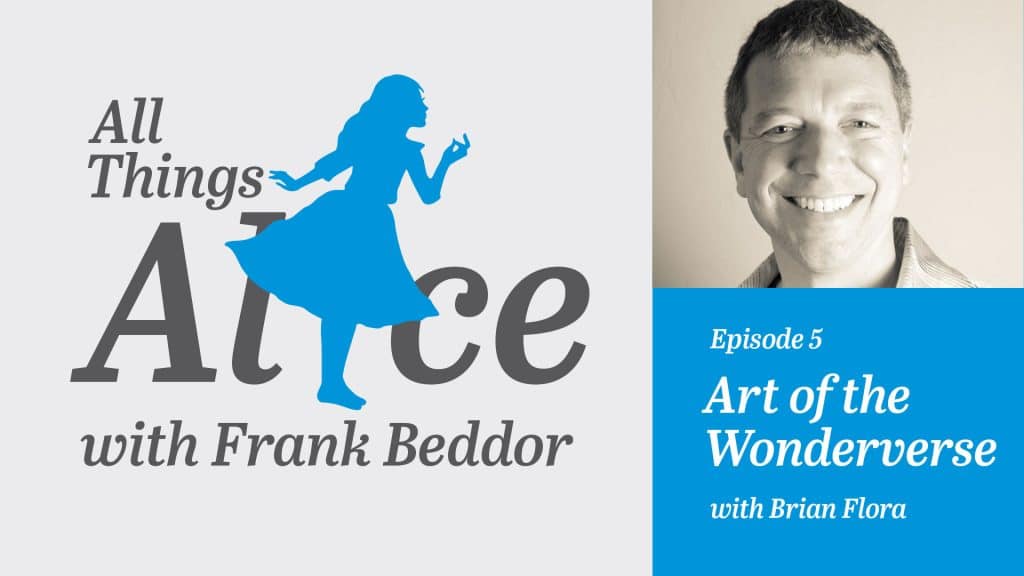
FB:
How do you go from saying to yourself, “I really want to learn everything there is about art” to finding your focus or your real niche area that has allowed you to have such a fantastic career as an art director and concept artist?
BF:
Every painter has their specialty. Mine ended up being mood and lighting. I think my pieces would tend to make you feel like you're someplace that's a story moment. I would draw upon things that I've remembered, clouds or just atmospheric things that I thought were beautiful and incorporate those in the paintings.
FB:
That’s why I loved your work so much because you had the light and the mood. You were able to make fantasy worlds feel real, as if you could go to that place. I did a lot of school events. I would often tell kids, I said, “Oh, if you want to go to the Chessboard Desert, you just have to go down the 405 and when you hit the 101, go right. And then there's a street,” and they're like, “What? What?” I go, “Yeah, it's a real place.” The artwork draws you in from that standpoint.
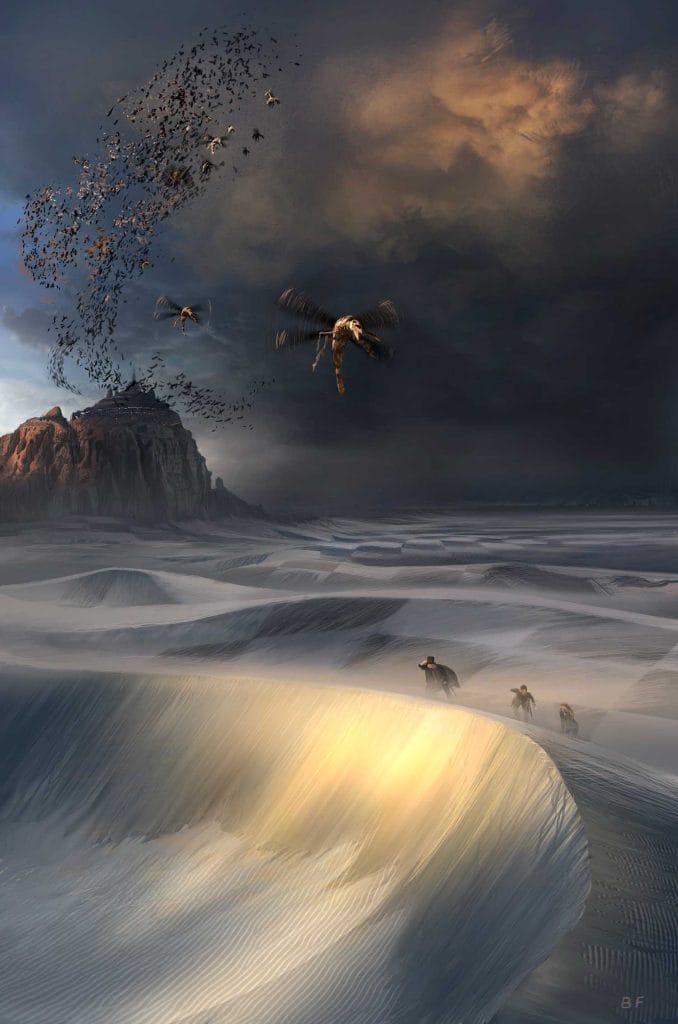
FB:
I do want to ask you about my Alice in Wonderland world and what you recall. I recall one of the first concepts you did might have been the Pool of Tears. But you had Alice with a rabbit almost like a teacup and we morphed from that to the Pool of Tears. I can't remember the order.
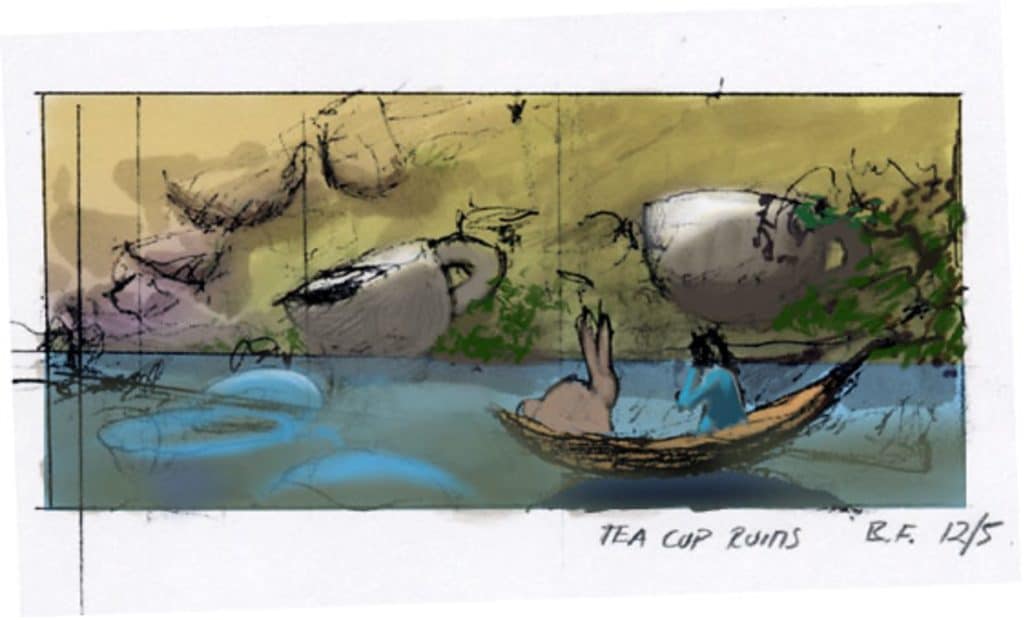
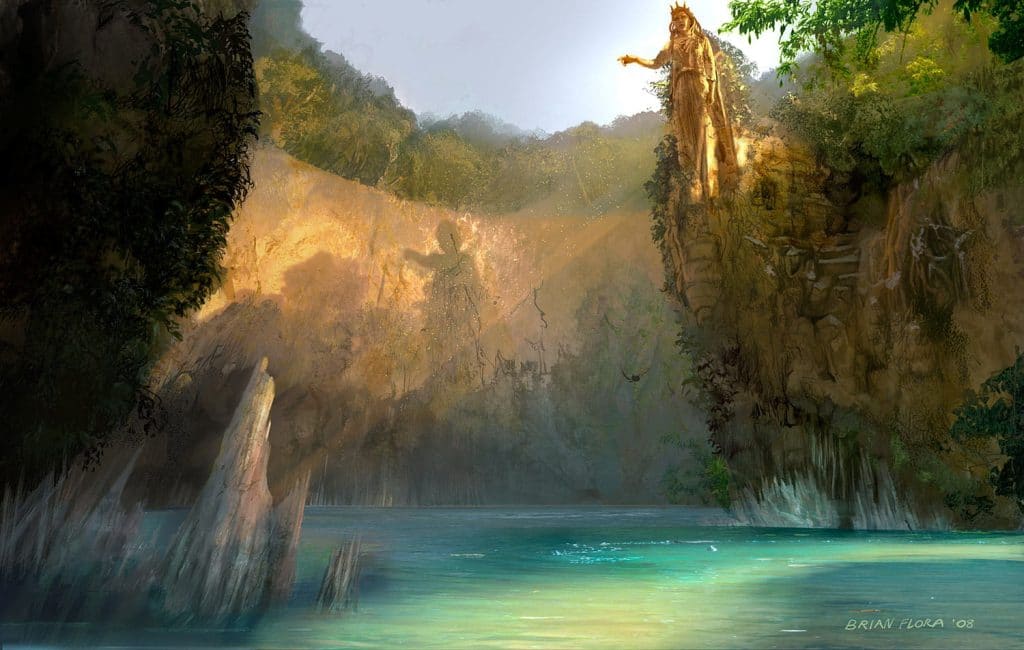
FB:
One thing that you worked really hard on that you nailed was the Valley of Mushrooms.
BF:
Was that the one that became a book cover? Or I think maybe we did a few iterations.
FB:
Yes, that became the British book cover for the paperback.
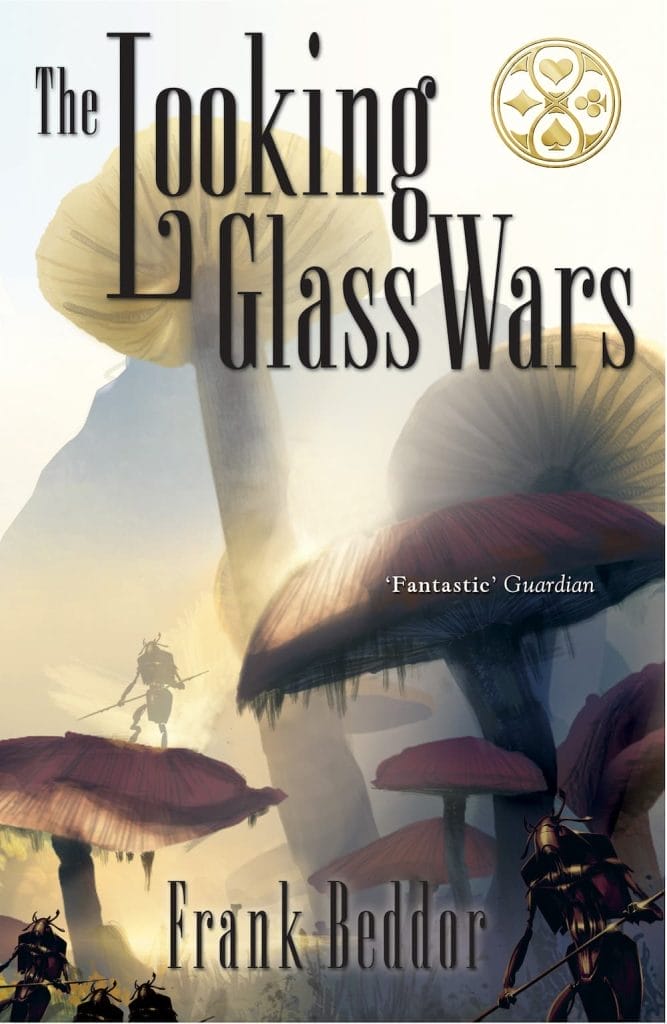
BF:
I have this thing about mushrooms. I just love them. I don't know why, but for some reason, they're just magical and interesting and otherworldly.
FB:
They’re very popular these days magic mushrooms. You did a lot of interesting mushroom concepts before we landed on the sort of the bigger, larger version of the top so that Alice and Dodge could use them to escape. I think that's one of them. It was a horizontal image. Then you did a vertical image later, which really showed the scope of the Valley of Mushrooms. You really just nailed the lighting. Because you're into mushrooms, did you go into nature to come up with it?
BF:
I did. I tend to look at a lot of reference, like National Geographic. Nowadays, you search online to find imagery, but I also like to just get the camera and go out and just take pictures to be inspired. I think I may have also sculpted some stuff and lit and photographed them just to get lighting ideas for the value of mushrooms. Just some simple shapes. I used to do that a lot as well. Now you would do it in 3D and light it in a game engine or in a 3D package. But back then I would often do those types of things, photograph something or try and find something in nature.
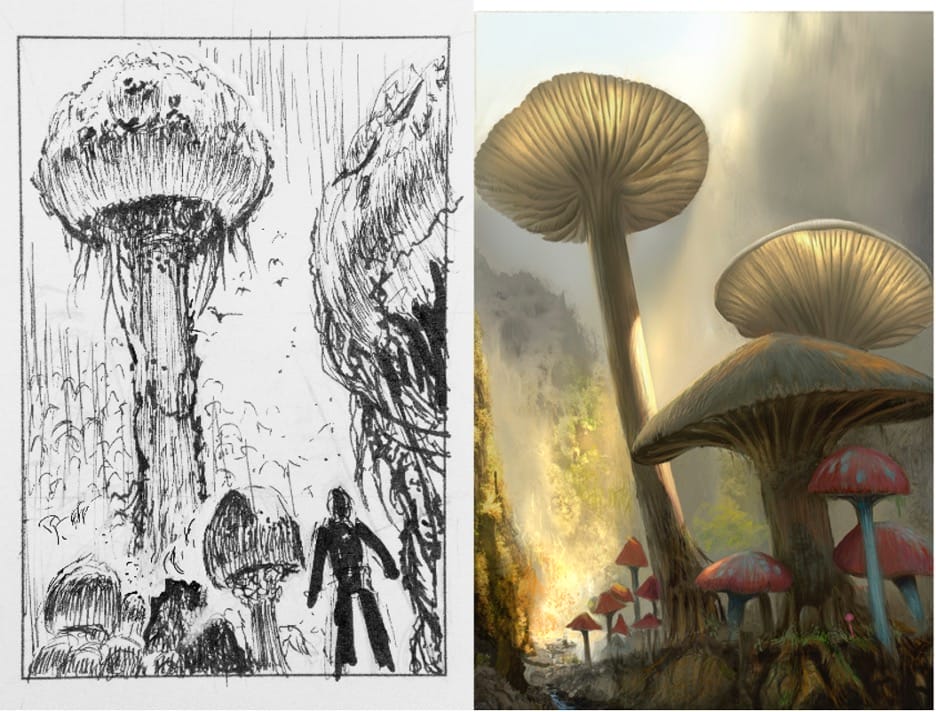
FB:
I didn't realize that you did sculptures for those environments. I do, obviously vividly remember the Bibwit Harte character. I'm guessing but it seemed like there was 50 variants on your sculptures and I said, “Are you sure that you want to do these sculptures?” Because it seemed like it was really time consuming, but you said, “No, I want to do it. This is my process.” But I think you wanted to do it because we had done almost exclusively environment and you were itching to do some characters.
BF:
For me, it was a good way to feel out the shape and to come up with something that felt like the character. I think I gave him some ears to tie him in with the rabbit character, but I was like, “Well, you know, he's got to look intelligent.” I thought of him as kind of like a Leonardo DaVinci character in a way, somewhere between an artist and a philosopher. So yeah, it was great. It was really fun. When I look back at that piece, and even though it's not exactly what I would do now, I still like what I came up with at the time. For me, sculpting was an easier way for me to find the character.
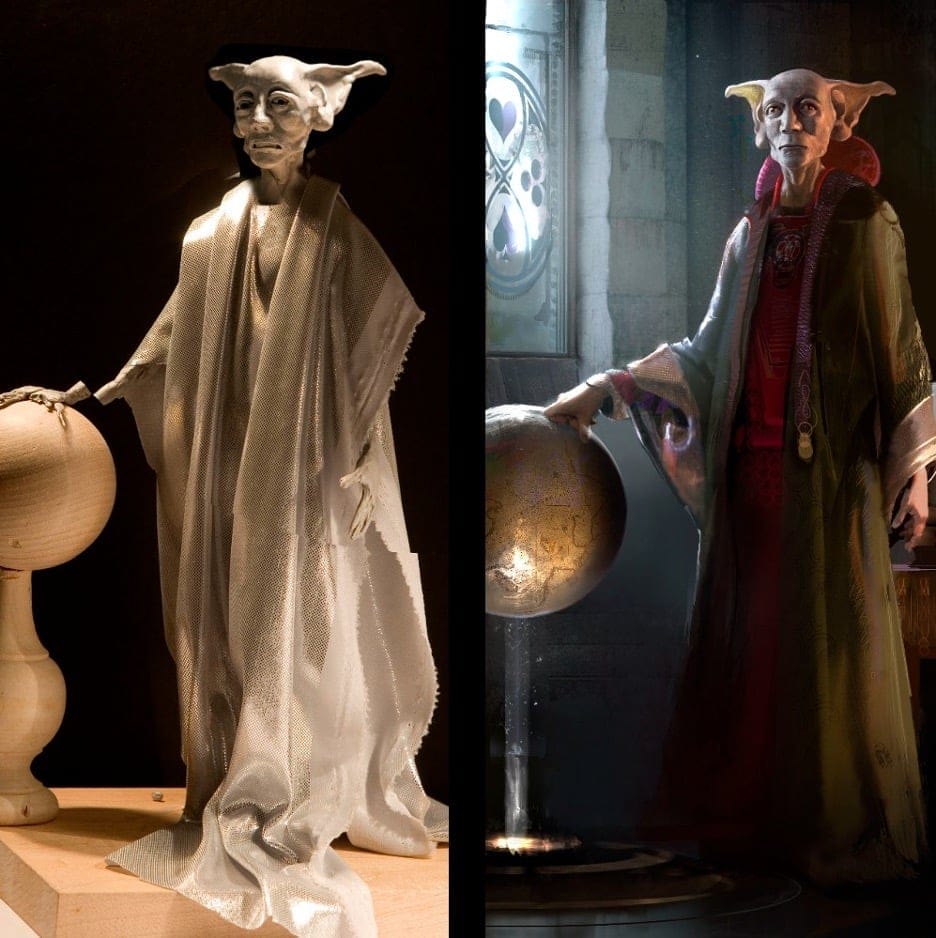
FB:
You started with Bibwit. The first image that you did was very precise, like a professor. It was this beautiful image, but he didn't have those large ears. Because Bibwit was an anagram of White Rabbit and the way that Alice would have described Bibwit to Lewis Carroll, is why he changed it to White Rabbit. He had really big ears because he had remarkable hearing. I remember making that note.
BF:
I remember the first drawing now that you mention it. I remember the first one with the beard and, he does have pretty big ears, but human ears.

FB:
It turned out that I loved that image and think I might have used that as Alyss’ dad, King Nolan, because he was very regal. But he wasn't a different species. That’s when you jumped into the sculpture, and I was really nervous because I'm like, “Well, wait, this is going to take a long time.” You were working at a full-time job, and I think you were working weekends. I used to say I have people who work on weekends, and they have sugar daddy jobs so I do the best I can, and I take what I can get, but that turned out great. Then last thing you put was the globe.
BF:
I forget if he's got his hand on it or something, but I think that's it was pretty much right out of a Vermeer painting. It just it looks like something that that character would have.
FB:
There are certainly images that are in every presentation and every meeting or every school event because they're part of the mythology. The Pool of Tears sets the story in motion when our heroes are separated so I'm constantly showing that. The Valley of Mushrooms just speaks to people that know Alice in Wonderland. It’s iconic, and it's just a twist, which you did beautifully. The Everlasting Forest was something invented. I wanted that to be very vivid and as if it was from the rain forests so that the colors were all popping, and our heroes have to transverse through there. That I think is my favorite image that you did for me. It was so spectacular. I really want people to see it because you'll see our heroes, but it really does feel like a real place.
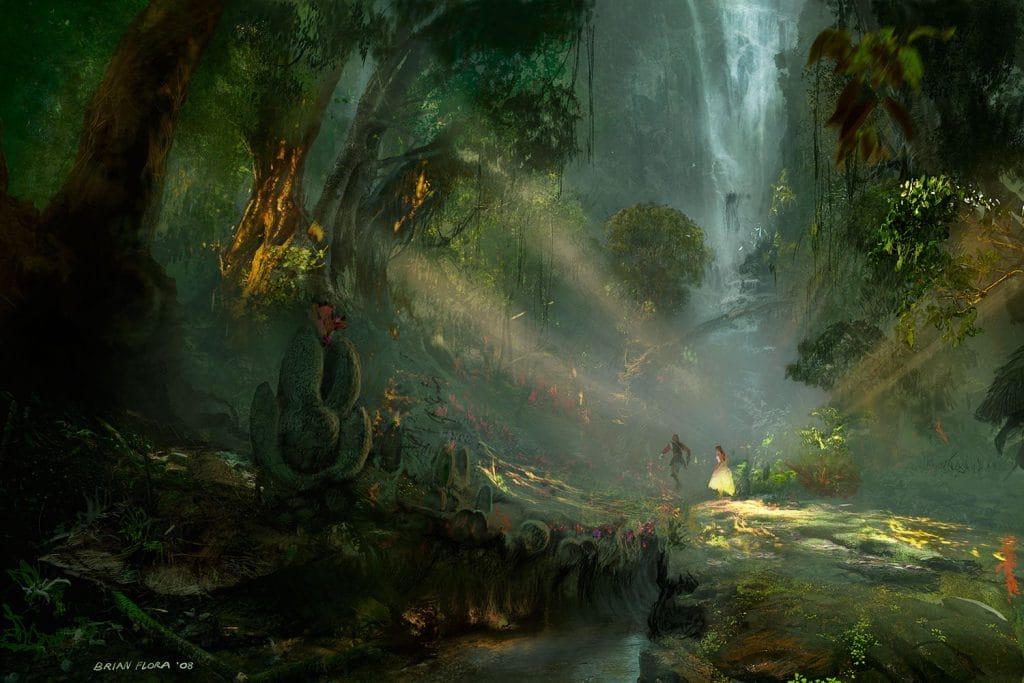
BF:
It's funny too, because even when I look at that piece now, I really like it. It’s indicative of something I would do now. I wouldn't redo it. I think it's just fine. I went through a big transition when I came out of ILM, I had a feel for creating images that had an illustrated look but yet were still realistic and interesting. That piece was one from 2008, as you had mentioned. I felt like I was beginning to really get that look, you know, I'm like, “Oh, nice, it looks like an illustration, but it still has some realism, but it's magical as well.”
FB:
A lot of the images that you and I worked on came out fully formed, almost. There were some lighting and color choices. I remember in the Chessboard Desert; we added Redd’s layer in the background. But one of the things that we worked on was the Whispering Woods. You did a lot of concepts, and it was really interesting, but it was at the bottom of the tree. There was this huge trunk with big roots, and I was like, “Well, I don't know, I thought it was more from the top down, that would create a canopy so the heroes would be running, and then the top branches would come down and whisper and that's basically all I had.

BF:
Yeah, I never quite finished that piece, right?
FB:
We have a version that's pretty good that I did use but it didn't pop in the same way. We also did one about the Iron Butterfly, which was a concept that I can't even remember if it made it into the book. Some of those were not finished and I was just having such a good time working with you I could have had the whole thing done. I just couldn't afford to do the whole thing.
BF:
It was really fun back then just to doodle and make little sketches and come up with ideas and stuff.
FB:
Let’s talk about Alice in Wonderland. What was your first introduction to Alice in Wonderland? And if there are any of the artists who have worked on the books, or the art itself, or the movies that have influenced what you’ve done.
BF:
The original introduction was just the Disney movie. I think I saw that at the Sequoia Theater in Mill Valley when I was, I must have been between four and seven. So that was my first memory of Alice.
FB:
In a movie theater! That's very unusual.
BF:
I just remember, something about the other worldliness of it, like her falling inside the hole. All the objects and it was just very magical. I love that feeling. Then much, much, much later, I found this book, which is amazing. This is by a Disney artist, but I don't believe they used this person’s work. It's Alice's Adventures in Wonderland illustrated by David Hall. I think this is all developed for Disney. In other words, he did illustrations for one of the Disney films. And they're just amazing sketches.

FB:
I don't know those. Wow.
BF:
I think it’s the best Alice in Wonderland imagery that I've seen. I look at them just because they're these great storytelling frames. When I want to get inspired, sometimes I'll pull this book out and I'll just look through it to get some ideas.
FB:
We’ll definitely want to share some of those images. I love seeing all the different artists that have used Alice and did interpretations of Alice. It's pretty amazing.

BF:
Then another really influential movie was Dreamchild. I love that movie. I was a junior or senior in high school when I saw it. It had Jim Henson’s puppets and was about Alice Liddell being invited by Princeton to celebrate the 100-year anniversary of Lewis Carroll's birthday. It’s mixed with her being kind of haunted by their relationship.
FB:
The story is Alice Liddell (later Alice Hargreaves), who was the muse for Lewis Carroll, supposedly, when she was 80, was invited to the U.S. to give a speech. In the movie, she was going to America to give a speech to celebrate Lewis Carroll and there were these flashbacks about her time with Lewis Carroll and his writing the book. All the Wonderland characters were puppets. It was very interesting and weird. It was an exploration of her relationship with Lewis Carroll, because of the suggested, sexual undertones of the relationship.
BF:
Yeah, that was certainly part of it, the inappropriate nature of it and the hurt and her trying to grapple with what was positive in that and maybe what was negative and how to process it. She was kind of haunted with that. Then also, she was haunted by her own age. So, the characters from Alice’s Adventures in Wonderland would appear telling her that she's old, which I just found that very interesting. I tend to like movies like this, where they kind of use fantasy to work on some pretty serious issues. I think it’s fascinating.
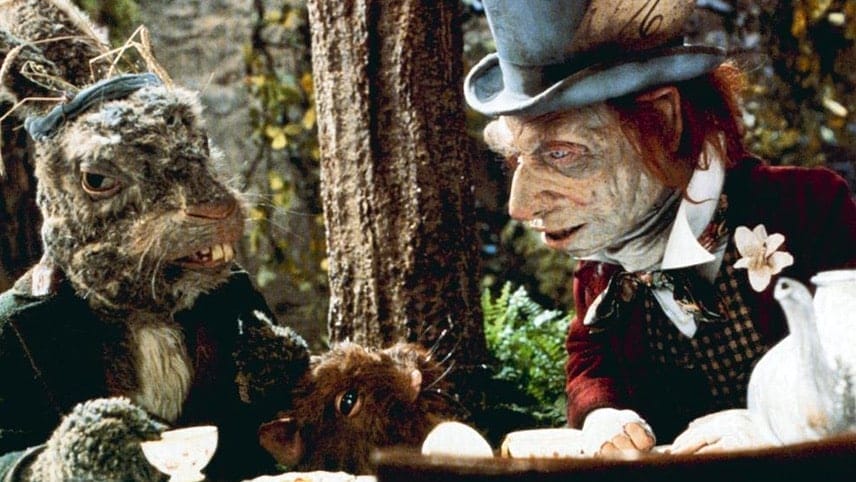
FB
I think that Dreamchild went on and won three BAFTA awards or something like that.
BF
What I really loved about it was the mood in the scenes. In the Mock Turtle scene in the beginning, it’s just very mysterious and the lighting is very moody and it's right up my alley. It really feels like a dream.
FB
To your point, it's established in that opening scene. Jim Henson's Creature Shop did a great job with the makeup and the creature effects. All the puppets were based on Tenneil's (the original artist) artwork, which I did not know. So, I'm really curious to see the Disney book you mentioned because I'm a huge Ralph Steadman fan. I also love Salvador Dali's crazy, psychedelic version of Alice. Then there's Barry Moser, who did something I think in the 70s. Just in terms of what's trending these days, he is in an exhibit in France, on all things Alice so any book illustrations or paintings or matte paintings and he's one of the only Americans that's included in this exhibit that's going on right now. It’s been 150 plus years, but it doesn't stop. Alice just keeps right on rolling along.

BF
There’s something about that dreamy quality that this one story really captures it. I was thinking about how a dream, in hindsight, is every bit as real as what you did yesterday, right?
FB
Absolutely.
BF
If you have a dream and you wake up the next day, they’re as real as each other. I just think that whole part of our experience, formulating ideas while we're asleep, is really important in the way that you connect the dots between different parts of your lives and imagination.
FB
One of the questions I like to ask guests is if you were a character from Alice in Wonderland, who would you be? And why?
BF
Yeah, so I thought about that just this morning. I think I would say Alice, specifically because of her arc going to England, and having that be an extremely good representation of the artistic struggle. You have the magic. Then, do you have the magic? And then you lose it and then you get it back. I think that's great.
FB
Do you have a version from Lewis Carroll's that comes to mind?
BF
Probably none where I identify with any of the characters. But I would say Alice again, because she's sort of passing through the story and experiencing all the dreaming. I still feel mostly like that character. I like to fancy myself as a Bibwit. He’s an interesting character, or the Caterpillar is interesting, because they’re sort of mystical and have vast knowledge and it’s very intriguing. There are different things I like about all these characters. But I still really identify with, every day and every night, I literally try and dream. As I'm falling asleep, I'm kind of like, “Here it goes.” You start seeing little things and the little stories start to come out of it. I'm fascinated with that.
For more information on Looking Glass Wars & Alice in Wonderland, check out the All Things Alice Blogs From Frank Beddor